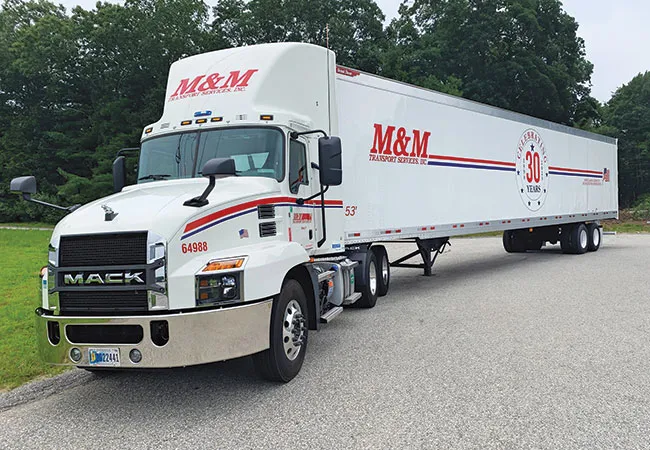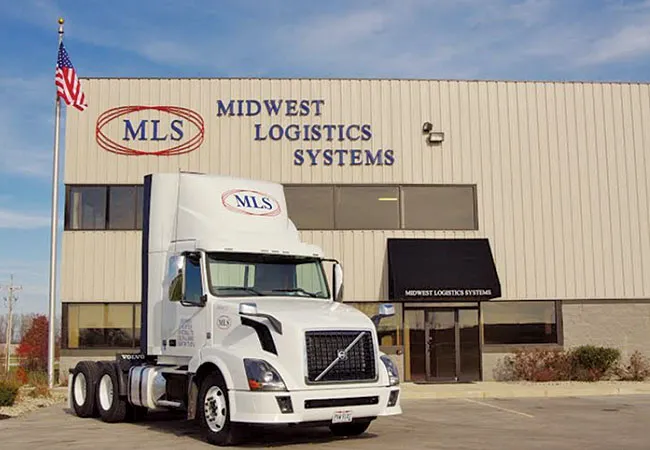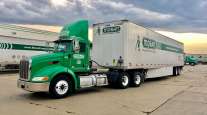M&A Deals Require Intention and Involvement During Process

When it first acquired M&M Transport, Schneider made sure not to force modifications or integrations. (M&M Transport)
[Stay on top of transportation news: Get TTNews in your inbox.]
The joining of two trucking companies always comes with challenges throughout the merger and acquisition process. The already slow-moving procedure was exacerbated during the turbulent times of the boom/bust cycle of 2022 and 2023.
Investment bankers who specialize in trucking M&As say many companies invested heavily in assets when the freight market soared during the post-COVID period of 2022, only to find themselves wanting a way out when 2023 brought on a freight recession, inflation and higher interest rates.
“We’re sitting in a position where people are looking back and saying, ‘My business model peaked in 2022; I want to capitalize on that,’ ” said Alex Winant, president of the Ontario-based investment banking firm TransFunds. “But that’s impossible right now.”
That has led to a unique dynamic that sees larger and midsize companies, unable to grow organically with current market conditions, looking to acquire smaller niche carriers to bolster their capabilities.
Schneider, ranked No. 8 on the Transport Topics Top 100 list of the largest for-hire carriers in North America, saw such an opportunity when it acquired West Bridgewater, Mass.-based M&M Transport, a retail and manufacturing-related carrier, in August 2023. The acquisition added 500 trucks and 1,900 trailers to the Schneider fold. The move followed Schneider’s January 2022 acquisition of truckload carrier Midwest Logistics.

Howe
Jason Howe, Schneider’s senior vice president of operations, said the success of both deals hinged largely on the fit of the companies’ respective cultures. Schneider management team members had spent a lot of time with the target companies.
“Every one of our team members, as we investigated different areas of the company, had the additional assignment of assessing culture as they observed operating mechanisms,” Howe described. “So in that sense, it’s everyone’s job.”
Since adding the acquired companies’ assets and talent to the organization, Schneider has had opportunities to better deploy its capacity for customers, as well as for priorities such as facility and equipment management. At this early stage, Howe said the greatest benefit has come from learning about each others’ best practices.
Billy Hart, managing partner at Jacksonville, Fla.-based Bluejay Advisors, which specializes in M&A in trucking and logistics, represented Midwest Logistics in the 2022 deal. He praised Schneider and its management team for its efforts in bringing the Midwest team into its organization.
“They really spent a lot of time working with our client to understand who’s running this company and who was going to stay post-close,” Hart said. “Their operations team was top-notch, and for Schneider, part of their investment thesis was the Midwest Logistics management team.”
Schneider also is ranked No. 21 on the TT Top 100 logistics list.

Schneider acquired Midwest Logistics in January 2022. (Midwest Logistics Systems)
Do No Harm
Making the two organizations work together is a matter of aligning not only culture, market strategies and operational processes, but also short- and long-term growth goals.
With the growing importance of technology in the trucking industry, merging companies often face the challenge of integrating different platforms — and asking employees who are used to one system to transition to a different one. Hart said it’s important not to push that integration too quickly.
“I like the term ‘do no harm’ in the early days,” Hart said. “Call it the first six months of the transaction. Try not to make too many changes, even if they’re the right changes and it’s right for the people and right for profitability.”
He added for most people, change is difficult and it’s important to “let the dust settle” before a personnel transition to a new system.
Howe said Schneider was careful not to push change too quickly with the companies it acquired, and in the case of M&M, the carrier chose not to force a modification from the technology platforms M&M had been using — except in a few cases where it made things easier for drivers or customers.
“In the pursuit of synergies and growth, and organizational earnings, it’s important to be cognizant of the rate and pace of integration,” he said. “In the case of M&M, it’s a smaller management team, so we have to manage resource consumption toward integration with the goal of running the business.”

Tenney
According to Spencer Tenney, CEO of the Nashville-based trucking M&A firm The Tenney Group, a poor technology fit can actually kill a deal.
“Technology is a huge focus point in both the pre-diligence of the deal and in preparation for integration,” he said, adding that in many cases, if it’s not clear that the target company’s tech platform is going to integrate well, it might be dead on arrival. “They might not want to touch it if they sense there’s some risk around the integration,” Howe continued. “It may affect the way they value the business.”
Another factor for buyers to consider is what Hart calls deal fatigue — the inevitable stress that sellers experience after the long process of simultaneously running their companies and preparing them for sale.
“In almost every case, there’s deal fatigue,” he said. “Most sellers in transportation logistics — call it the low and middle market — become overwhelmed in the deal process. They’re running their business and in the meantime, they’re being asked and required to be involved with this process, even if they do have an investment banker."
Hart added that there’s an additional need to get the marketing material together, attend management meetings and manage the seller. “We’ve never represented a seller that didn’t get deal fatigue at some level,” he said.
Other Challenges
Getting any transaction to close can be tricky at a time when financing is tight, and institutions are very particular about the deals they join. Further complicating the closing challenge is the fact that key economic factors have changed so quickly since the brief boom of 2022.
And would-be sellers are sometimes shocked by the fact that actual offers don’t match what their evaluations suggested the company was worth, since financing is not as easy as it was, and buyers want strong assurances that long-term cash flow will justify the purchase price.
We've never represented a seller that didn't get deal fatigue at some level.
Bill Hart, managing partner at Bluejay Advisors
Image
“Most of the carriers we’re dealing with have been used to financial crack. When there’s no cost of money, it’s easy to make money,” Winant said. “But now we have real transaction costs and real interest rates. It doesn’t change the calculation of EBITDA, but it changes the calculation of whose pocket the money goes into. And it doesn’t go into the owner’s pocket anymore.”
According to Tenney, buyers are sometimes asking sellers to forgo part of the payoff in the short term. The idea is to give the market time to rebound and give the acquired company a better opportunity to prove its worth to the seller.
“What it looks like generally is, in exchange for more money over a couple of years, there might be less cash at close,” Tenney said, adding that the process is not designed to be punitive. Because the freight market has been down, he noted, it gives companies the opportunity once the market inevitably rebounds to get full value from their business pre-freight market recession.
To retread or not to retread, that is the question. For some maintenance managers, the debate between purchasing new tires or retreads is constant. In this episode, host Michael Freeze finds answers about tires with Alex Aguilar, senior training specialist at Bridgestone Americas. Tune in above or by going to RoadSigns.ttnews.com.
“If you can’t produce during that earn-out period, they don’t deserve it,” he explained. “But if they do, then they deserve every penny.”
Sellers have a better shot at matching up with a buyer, Hart said, if they offer a specialized service that isn’t easily commoditized.
“It’s not to say a regular dry van carrier doesn’t transact in a marketplace, but it’s a bit commoditized,” Hart said. “It doesn’t get the highest value or a large buyer base to get excited about it.”
He used an example of a bulk carrier that is running in a particular region where there’s particular density not exposed to spot markets and has more contractual relationships. “That’s what I’d call a defendable position.”
Tenney was working just such a deal before talking with Transport Topics.
“I just got off the phone with somebody who had been approached by a major buyer who doesn’t have a presence in liquid bulk hauling,” Tenney said. “They’re trying to get into that space, and they’re buying a small business that’s established and has institutional knowledge that they can put their capital behind to expand. It makes more sense than doubling down on an area that might be highly commoditized.”
Want more news? Listen to today's daily briefing above or go here for more info
Trucking M&A experts said many company owners who started thinking about selling their companies in 2020 saw their plans put on hold by COVID and are only just now starting to see a normalizing market that might provide the opportunity to seek a buyer. However, the market is very different from the early days of 2020.
If two organizations can align their cultures, their market positions, their technology platforms and their future visions — all while finding a way to make the money work for everyone — then they might be able to execute a successful acquisition and subsequent merger.
“It all comes down to using structure to align interest and to share risk across the deals,” Tenney said. “That’s what’s allowing sellers to secure competitive evaluations, and it’s allowing buyers to simultaneously mitigate the risk associated with the deal.”






